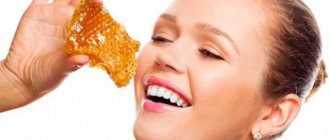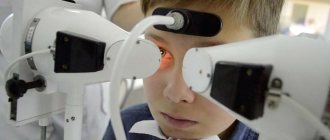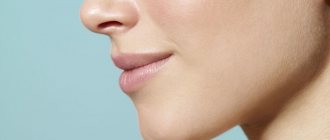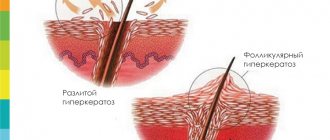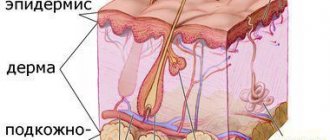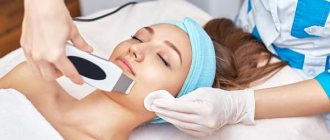What does human sebum contain?
Scientists have found that the composition of sebum plays an important role in the pathogenesis of acne. Normally it contains the following components12:
- 57.5% - triglycerides, free fatty acids;
- 26% - wax esters;
- 12% – squalene;
- 4.5% - cholesterol and its esters.
Sebum moisturizes the skin and provides it with ultraviolet protection. It contains lipophilic antioxidants that are important for hair and skin. Palmitoleic and oleic acids, which are part of sebum, protect the skin from pathogenic bacteria. 12
Composition and functions of sebum
Sebum (sebum) is a secretion produced by the sebaceous glands that contains lipids. The sebaceous glands express enzymes that are involved in the production of cholesterol and fatty acids. Sebum also contains fatty alcohols, triglycerides, carotenes, wax esters, etc. 255
Sebum performs the function of lubricating the skin and hair. He is her first protective barrier. If its production is insufficient, the skin begins to peel, loses elasticity, and becomes more vulnerable to damage. 255
Approximately 90% of the lipids that are found on the surface of the epidermis come from sebum. Sebum lipids and the secretion secreted by apocrine sweat glands are part of the hydrolipid mantle, due to which an occlusion is created on the skin, preventing moisture loss. 255
Sebum also performs other functions255:
- antimicrobial;
- antioxidant;
- photoprotective;
- anti-inflammatory.
Linolenic acid acts as an important regulator of keratinocyte differentiation by inhibiting the expression of the enzyme transglutamine transferase.
Functions of the sebaceous glands
04.10.2021
The sebaceous glands are responsible for the production of sebum, which occurs on almost the entire surface of the skin. They are included in the so-called straight, branched and vesicular glands. They mainly consist of stratified epithelium. Their most important job is to produce sebum, which is released into the hair follicle. It is sebum that protects the skin and hair, nourishes them and ensures proper hydration. In addition, it protects against the development of fungal or bacterial infections.
What does sebum consist of?
First of all, it is a mixture of epithelial lipids, its average composition is:
- glycerides (about 50%),
- waxes (about 20 percent),
- squalene (about 10 percent),
- hydrocarbons (about 5%),
- free fatty acids (about 5%),
- cholesterol esters (about 4 percent),
- other sterols (about 1%),
- other substances (about 4%).
Sebaceous glands are usually located around the hair shaft. However, we will not find them around the lips, nipples or external genitalia . It is estimated that they occupy from 100 to 800 glands per centimeter of hairy skin.
Reasons for the active work of the sebaceous glands
Although sebum is essential for the skin to function properly, sometimes the glands produce too much sebum. Increased activity of the sebaceous glands and, as a result, excess sebum are most often associated with hormonal disorders. They can appear during adolescence, and in adults, excess sebum and the resulting formation of unsightly pimples or blackheads on the skin can be a symptom of thyroid , a reaction to prolonged stress or an unhealthy diet.
The formation of acne is associated with blockage of the sebaceous glands. A plug begins to accumulate under the skin, blocking its exit. It consists of sebum, dead and calloused epidermis. Why are they created? There may be several reasons for this. Sometimes we talk about genetic factors, and sometimes the composition of sebum is to blame. The fatty acids it contains activate hyperkeratosis of the epidermis, which leads to blockage of the gland and the appearance of acne in the form of blackheads , pimples or purulent formations. Acne will get worse if the patient tries to fight it with androgens or exposes the skin to the sun. You should know that the belief that sunbathing helps with acne is a myth.
Due to excessive sun exposure, the skin produces even more sebum when exposed to high temperatures. And even if the sun dries it out, it will remain under the skin, and in the fall it will appear on its surface in the form of pimples . At the initial stage of acne , black dots are visible on the skin . Larger and more difficult to treat lesions begin to appear with a bacterial infection. They are usually caused by pathogens that occur naturally on the skin (Propionibacterium acnes and Propionibacterium granulosum).
The entry of bacteria into the sebaceous glands causes them to swell, and a red, painful lump appears on the surface of the skin, which over time turns into a pustule filled with purulent discharge. According to experts, it is better not to remove such changes manually, i.e. do not squeeze out. Unfortunately, many people ignore these recommendations and deal with them on their own, and this very often causes discoloration or scars that are then very difficult to get rid of. To avoid problems, go to a dermatologist and cure acne and stabilize the sebaceous glands.
Skin type and excess sebum
Excess sebum is a characteristic feature of so-called oily skin. Most of the sebum appears mainly on the forehead, nose and chin, i.e. T-zone on the face . Usually genes are responsible for this, but not only that. For some people, overproduction of sebum is associated with improper care and hygiene of the facial , and sometimes with its complete absence. To control sebum, you should take care of proper cleansing and moisturizing of the skin. Using highly drying preparations can only make the problem worse. People who have problems with excess sebum and who do not know how to care for their skin should consult a dermatologist or a good esthetician.
In addition, women especially should remember not to apply too thick a layer of powder or liquid to the skin. The skin also needs air to function properly, if all its pores and glands are clogged with makeup, it will not be able to breathe and this will cause it to start producing even more sebum and more and more unsightly changes will appear on the skin. face . If makeup is necessary, then it is better to choose the most natural cosmetics, and if necessary, wipe off excess sebum from the face with special wipes that do not remove makeup from the face .
Published in Dermatology Premium Clinic
What affects the composition of sebum?
With acne, the secretion of the sebaceous glands may change12:
- the level of free fatty acids with a long carbon chain increases;
- the amount of epidermal lipids decreases;
- the level of linoleic acid decreases.
This leads to increased sebum viscosity, disruption of keratinization processes, and increased colonization of bacteria in the SVF. As a result, the formation of comedones and the subsequent launch of the inflammatory process. 12
Due to the fact that the concentration of linoleic acid in sebum decreases, the pH level also changes - alkalization occurs. This leads to disruption of the barrier function of the skin, the permeability of the follicle epithelium increases, which contributes to the further proliferation of P. Acnes. 12
The consequence of a decrease in linoleic acid in sebum is that proliferation and dyskeratosis prevail over exfoliation of the epithelium, which becomes the cause of follicular hyperkeratosis. 12
Nasty sebum - a few words in defense
When exposed to air, the liquid released from the pores thickens, acquires an unpleasant shine and a specific odor. The skin secretion itself is odorless. When triglycerides are broken down by bacteria, free fatty acids are formed. The resulting volatile fatty acids give sebum its odor. The appearance of the skin deteriorates, it becomes shiny, and the pores expand.
The glands form and begin to work in the womb, under the influence of maternal and fetal hormones. The skin secretion consists of cholesterol esters and unsaturated glycerides.
Excessive sebum secretion prevents cell renewal (oiled skin sticks together dead skin particles), the skin becomes like an orange peel.
Composition of sebum
Skin secretion is a complex mixture of lipids (fat-containing substances). In percentage terms, sebum consists of:
- glycerides (approximately 40%);
- wax esters (about 25%);
- free fatty acids (by 16%);
- squalene and cholesterol (about 12%).
Human skin has a so-called “mantle”, which acts as a protective barrier from the external environment. The “mantle” includes the secretion of the skin glands, the microflora of the upper layer of the epidermis and dead horny scales. The protective barrier has an increased level of acidity (pH up to 5.5)
What happens when there is excess sebum production?
Changes in the composition and amount of sebum can lead to clogging of the glands. A significant increase in sebum production and an increase in the overall oiliness of the skin causes dermatological diseases such as acne and seborrhea. These skin diseases occur as a result of increased secretion of the sebaceous glands.
Most often, this can be caused by a disturbance in the physiological balance of androgenic and estrogenic hormones in the body. The sebaceous glands react to hormonal changes in the body, problems with the gastrointestinal tract and some other diseases.
It is believed that the cause of the development of pathology is a malfunction of the central nervous system. With seborrhea, there is an increased secretion of skin secretions by the sebaceous glands of the whole body. Most often, teenagers encounter this problem during puberty. The disease is less common in adults and younger schoolchildren.
Positive properties of skin secretion
Sebum performs several important functions:
- covers the skin with a protective film;
- protects against pathogenic bacteria;
- protects against harmful environmental factors;
- prevents skin loss of moisture;
- lubricates the skin, protecting it from drying out;
- prevents exposure to acidic and alkaline environments.
We can conclude that sebum is the skin’s natural defense. The product of the skin glands is a natural care, protection for the skin, as well as a natural lubricant for the hair. With insufficient secretion of the skin secretion, the skin dries out, becomes prone to cracks, and quickly loses its freshness and elasticity.
Many problems can be prevented by practicing good personal hygiene. But you shouldn’t overuse cosmetics to cleanse your skin either. Excessive removal of sebum reduces the protective layer of the skin and disrupts the natural production of sebum.
